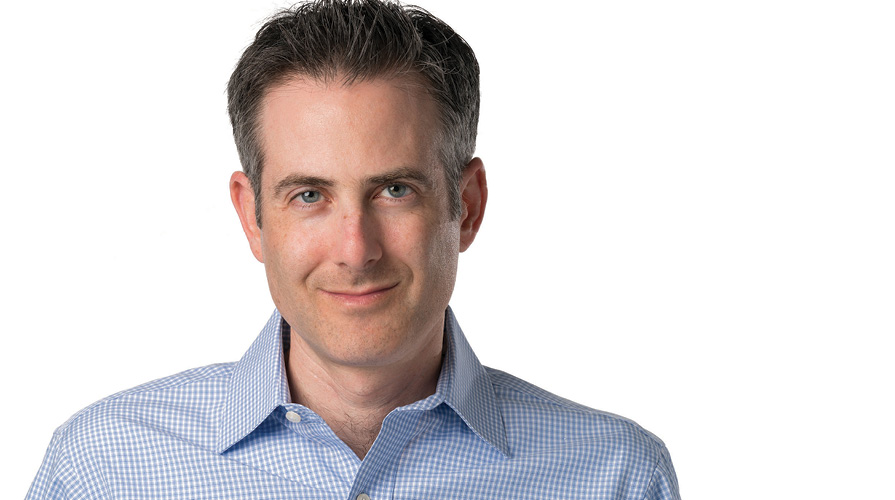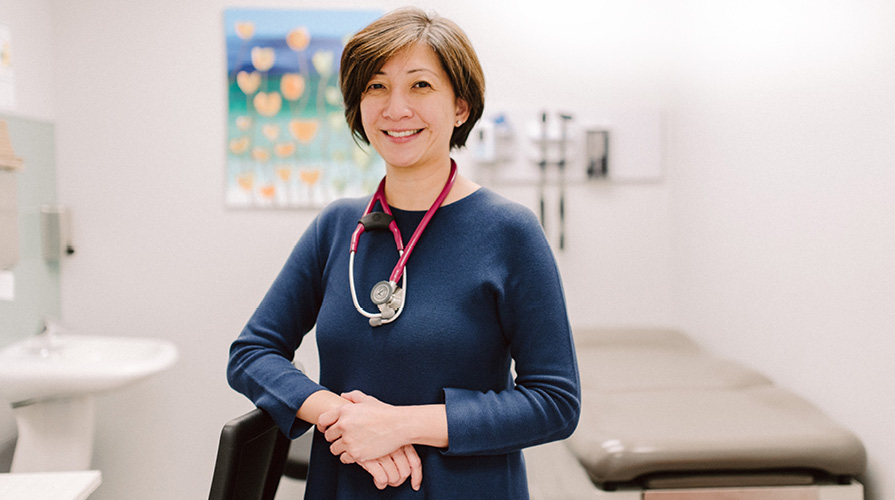This article originally appeared in the Spring 2022 issue of the Ontario Medical Review magazine.
Social determinants of health addressed with group model
There’s a story Dr. Allan Grill likes to tell when asked about team-based health care. Last spring, he noticed that one of his elderly patients was starting to develop memory issues. The man’s children confirmed that he was forgetting appointments and food was being left in the fridge too long. It was the kind of situation that made Dr. Grill glad he is part of the Markham Family Health Team.
“What do I do if I’m a solo family medicine practitioner and I don’t do house calls,” Dr. Grill said. “My only option is to refer to CCAC (Community Care Access Centre) and ask a case worker and a bunch of different health professionals who I don’t know well to go in and do an assessment. Hopefully, the communication back to me is timely. That’s one way of doing it, but there is a different way. A better way.”
The “better way” was to deploy some of the interdisciplinary health-care professionals who made up the Markham FHT’s Aging at Home Program. The team’s social worker talked to family members and friends, the occupational therapist went to the house to assess the safety of the physical environment, the pharmacist issued blister packs to make it easier for the patient to remember when to take his medications. Then the team co-ordinated with the CCAC to ensure that services such as bathing care and food preparation support were in place.
“What do I do if I’m a solo family medicine practitioner and I don’t do house calls?” —Dr. Allan Grill
“Now you have a situation where instead of being in crisis, the patient has been surrounded by an entire team of health-care professionals working quickly and in a co-ordinated fashion to ensure that he is able to maintain his independence at home for as long as possible.”

For Dr. Grill, the story is a perfect illustration of what team-based care can do. And there are many such stories across Ontario, he said. This fact was reinforced by the Ontario Medical Association when it released its Prescription for Ontario: Doctors’ 5-Point Plan for Better Health Care last October. The plan, which includes 87 recommendations, including 12 specific to northern Ontario to strengthen the health-care system, recommends increased funding and other forms of support to “provide patients with access to the family care model of practice that works best for them, including team-based care, interdisciplinary collaboration, and increased access with fewer unnecessary visits.”
Central to the OMA plan is the expansion and improvement of team-based health care across Ontario communities. While there are different models of team-based care, what they have in common is the assembling of different health professionals, all working together in the interest of patients, and often facilitating care within the home. Dr. Grill’s team in Markham includes six nurses, an occupational therapist, a diabetes educator, four nurse practitioners, two dietitians, a pharmacist, a chiropodist, five social workers and 19 family physicians. Together, they are able to help their patients, particularly the frail elderly, deal with the problems that so often threaten their ability to live independently in the community.
Photo: Dr. Allan Grill, a member of the Markham Family Health Team, believes optimal patient care involves health-care teams working collaboratively to deliver care where patients live.
Dr. Catherine Yu is also an advocate of team-based care. She is a family physician and medical director of the Health Access Thorncliffe Park Community Health Centre, part of the East Toronto Health Team. Her perspective on team-based care is influenced by the first decade of her career when she worked as an emergency department doctor at the then-Toronto East General Hospital.
In that job, she learned the value of working as part of a team with nurses, other doctors and other hospital-based health providers. The big difference between then and now, she said, is that hospital teams are primarily equipped to help with specific medical problems, whereas her community team helps patients deal not only with medical issues but with factors that lead to those problems and the challenges that result from them.
Those factors, known as social determinants of health, could include situations where the patient exists on a very low income, lives in substandard housing or cannot afford nutritious food.
“Being with people where they live is such a hands-on thing.” —Dr. Catherine Yu
Dr. Yu said she is now practising the kind of care she believes in. She has taken the concept of helping her patients remain at home a step further — she does house calls for her home-bound older patients. House calls are not as onerous, and are more impactful and rewarding when team-based care is in place, she added.
“Being with people where they live is such a hands-on thing. It’s a chance to help them directly, and also to see the benefits of what the entire team has accomplished. So when someone in their living room says ‘thanks to you guys, I have learned to work an iPad, so that even though I can’t go to the library because of COVID, now I can read that book that I wanted to read,’ that’s a good day at work.”
 Both Dr. Yu and Dr. Grill said the best care involves teams supporting one another to properly bring care directly to where patients live. Health-care teams working in the community can help people stay at home longer. They have more capacity than smaller family practices to provide services such as flu shots. They have designated people to do electronic medical record data searches in order to contact people who need cancer screening. All of this eases the strain on hospitals and makes life easier for the families of patients.
Both Dr. Yu and Dr. Grill said the best care involves teams supporting one another to properly bring care directly to where patients live. Health-care teams working in the community can help people stay at home longer. They have more capacity than smaller family practices to provide services such as flu shots. They have designated people to do electronic medical record data searches in order to contact people who need cancer screening. All of this eases the strain on hospitals and makes life easier for the families of patients.
They also reduce wait times and backlogs by reducing the number of referrals to specialists and other community services, as these other necessary medical services are often available within the Family Health Team.
Dr. Grill tells another story about the benefits of team-based care. At the height of the COVID-19 pandemic, the Markham FHT took part in the province’s COVID-At-Home program, reaching out to people who had tested positive for COVID, ensuring that if they were at home, they were being monitored for any changes in health status and were getting the care they needed.
The team’s nurse practitioners worked seven days a week, checking up on patients. One of the patients they contacted sounded fine on the phone initially, but as the nurse practitioner went through her questions, there were a lot of red flags. It took her a lot of time and persuasion to convince the patient to go to the hospital, but they eventually agreed. The next day the patient was intubated in the ICU.
“Can you imagine what would’ve happened if they had stayed home,” Dr. Grill said. “This is an example of where you have a group of health-care professionals working together with community partners, bringing the care to the patient, making decisions that have an impact on saving lives.”
Colin Gray is a Toronto-based writer.